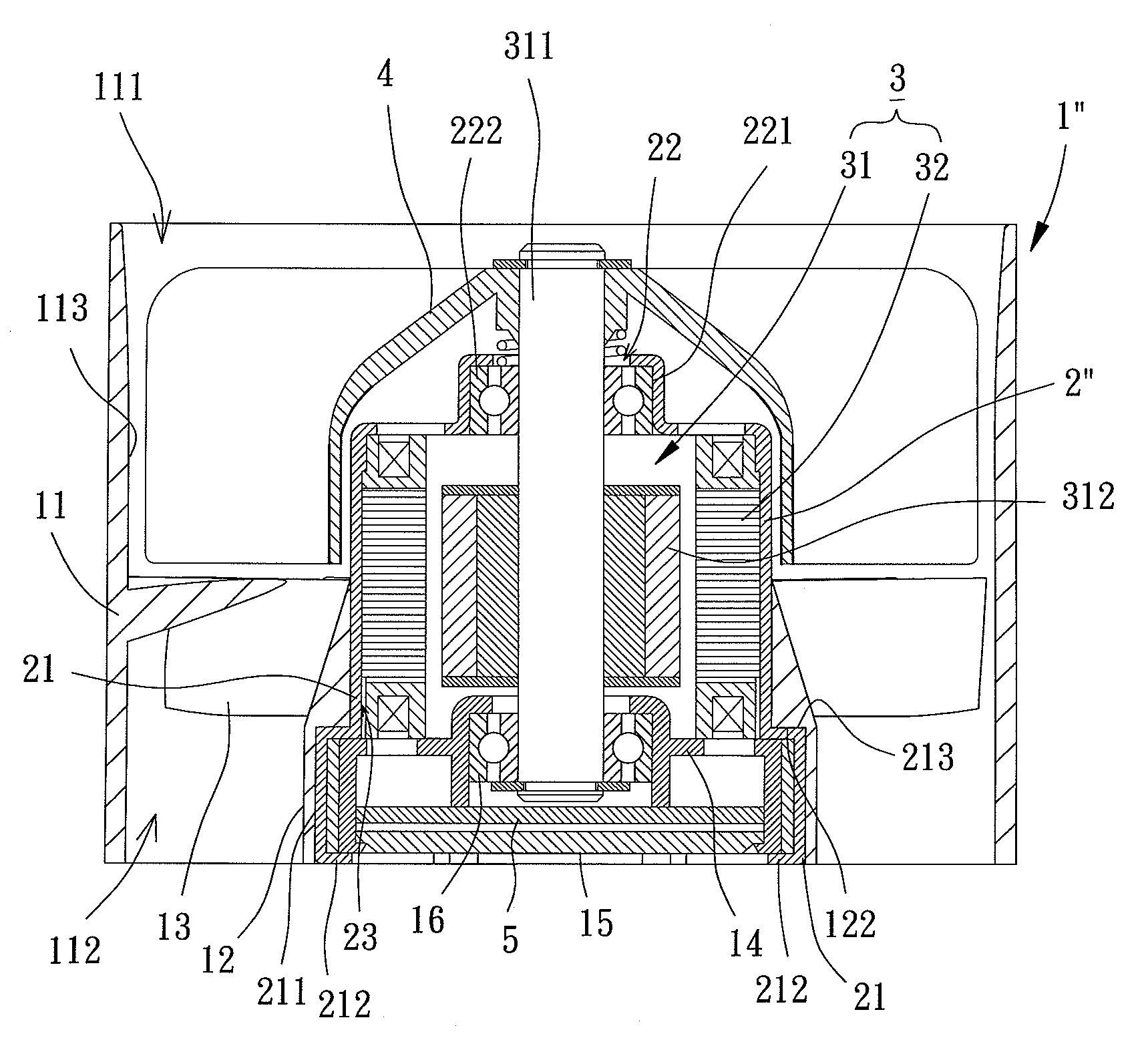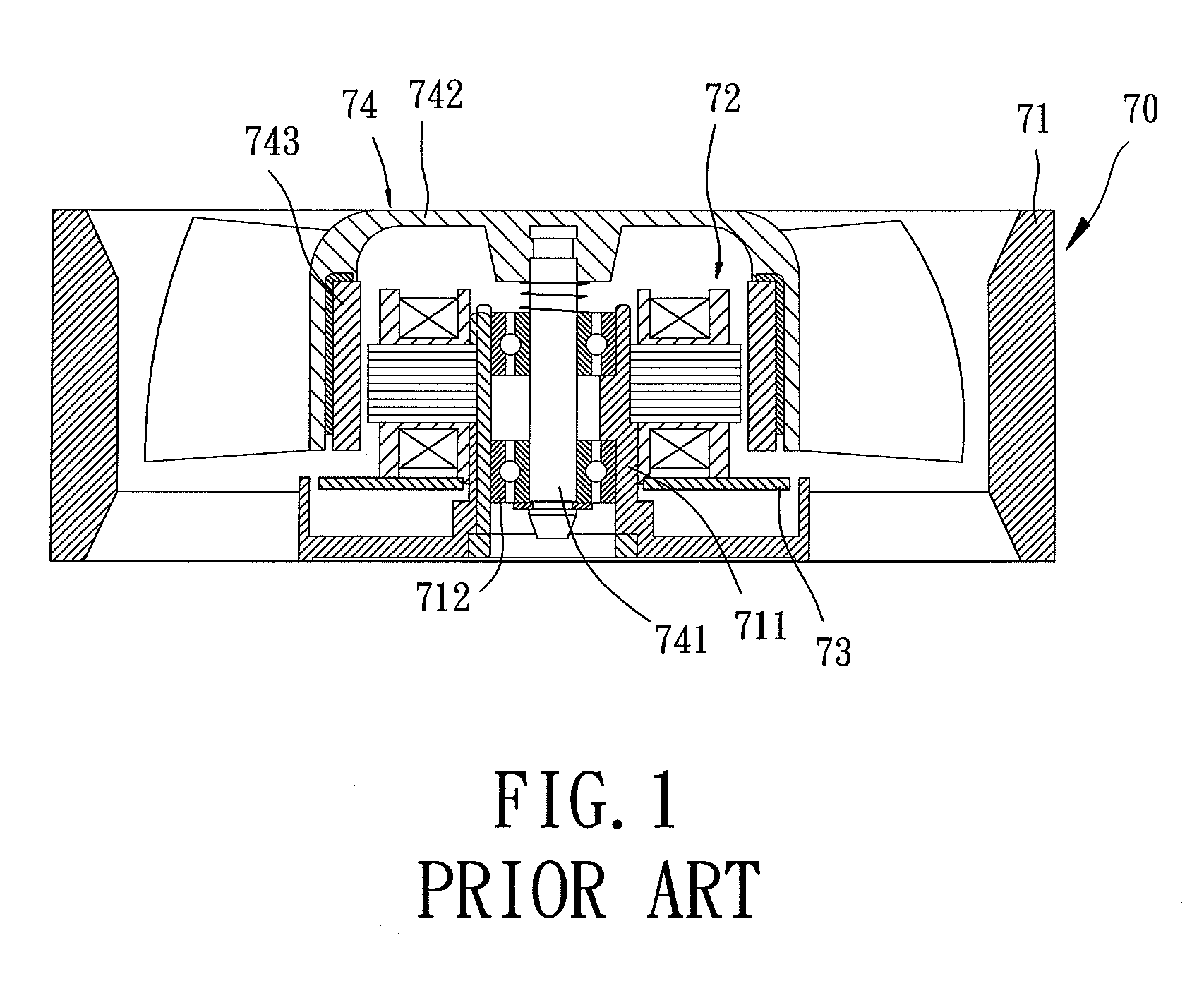Inner-Rotor-Type Heat Dissipating Fan
a heat dissipating fan and inner-rotor technology, applied in the direction of positive displacement liquid engines, piston pumps, liquid fuel engines, etc., can solve the problems of increasing the need for heat dissipation with high efficiency, reducing the efficiency of heat dissipation, and generally less stable rotation of outer-rotor-type motors. achieve the effect of preventing magnetic flux leakage and electromagnetic interferen
- Summary
- Abstract
- Description
- Claims
- Application Information
AI Technical Summary
Benefits of technology
Problems solved by technology
Method used
Image
Examples
Embodiment Construction
[0031]An inner-rotor-type heat dissipating fan of a first embodiment according to the preferred teachings of the present invention is shown in FIGS. 4 and 5 of the drawings. According to the first embodiment form shown, the inner-rotor-type heat dissipating fan includes a fan housing 1 made of plastic material and formed by injection molding, a seal casing 2 mounted inside the fan housing 1, an inner-rotor-type motor 3 mounted inside the seal casing 2, an impeller 4 coupled to the inner-rotor-type motor 3 and a circuit board 5 electrically connected to the inner-rotor-type motor 3 to control the inner-rotor-type motor 3 for driving the impeller 4 to rotate. Thus, airflow generated by rotation of the impeller 4 is concentrated and guided by the fan housing 1, and the seal casing 2 provides a sealing effect for avoiding magnetic flux leakage and electromagnetic interference.
[0032]According to the preferred form shown, the fan housing 1 includes an outer frame portion 11 having an air ...
PUM
 Login to View More
Login to View More Abstract
Description
Claims
Application Information
 Login to View More
Login to View More - R&D
- Intellectual Property
- Life Sciences
- Materials
- Tech Scout
- Unparalleled Data Quality
- Higher Quality Content
- 60% Fewer Hallucinations
Browse by: Latest US Patents, China's latest patents, Technical Efficacy Thesaurus, Application Domain, Technology Topic, Popular Technical Reports.
© 2025 PatSnap. All rights reserved.Legal|Privacy policy|Modern Slavery Act Transparency Statement|Sitemap|About US| Contact US: help@patsnap.com



